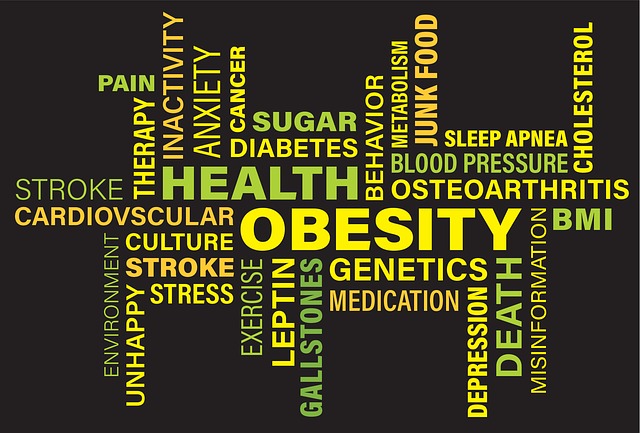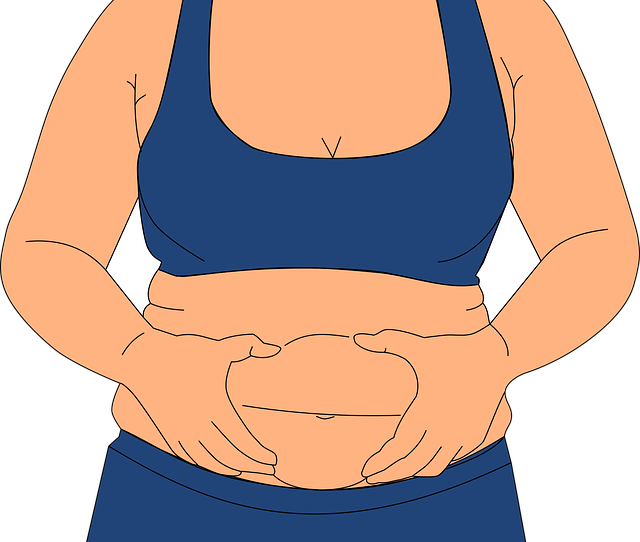The Discovery of 4 Subtypes of Obesity
The Discovery of 4 Subtypes of Obesity:
What it Could Mean for Surgical Weight Loss in the Future

In America, and other countries that are like it, there has been an ever-increasing problem of obesity. However, it is not a problem that people aren’t willing to investigate. As the decades have passed doctors, surgeons and endocrinologists have studied the nature of obesity. As a result, they gained an improved understanding of what obesity is and have improved surgical weight loss techniques as a result.
The evidence of this sort of improvement is clear when you compare the more mainstream surgical weight loss techniques of today to the surgical weight loss techniques of the 1950’s. It is also important to note that the medical community and their patients actively addresses physical, mental, and nutritional problems that was part of an unintended side effect of surgical weight loss.
The increase in technology over the last couple of decades has presented multiple opportunities for the creation and sharing of more communities, support groups, and resources for people who have through any form of surgical weight loss.
And the march of progress has yet to slow down any time soon. As of November 2018, a team of specialists has published a report that may very well revolutionize the way we understand and approach obesity.
This new understanding come from addressing the very faulty and human way of thinking. Compartmentalization without nuance.
Categorization Comes into Play
People are naturally wired to categorize things. It is part of our most basic of cognitive processes and is important to our very survival. Without it, we couldn’t tell the difference between a living thing or an object, the difference between food and poison, or the difference between someone we know and a stranger.
When we learn to compartmentalize as children, usually around the beginning of elementary school, we start to notice that no two people are the same. We start to take note of major differences in other people such as height, weight, skin tone, hair color, etc.
As we get older we can classify things in a more detailed context. Things like human behavior, external circumstances, and biology become factors during evaluation. Even if a situation is either personal or systemic.
What does this have to do with surgical weight loss? Well, it challenges the way doctors and medical specialists look at something like obesity.
For the longest time, there has been a “one size fits all” way of thinking when it comes to people being overweight or obese. And that is due in part to the way we cognitively process individuals’ vs the way we cognitively process groups. And this is no one’s fault. It is just the way the human brain is wired.

Generalization and Its Usefulness
We see this sort of thing strongly demonstrated when it comes the judgement of people associated with political or religious ideology. Our brains come up with a series of broad generalizations of people, based on the characteristics that are commonly held within a group of people.
And it is very useful.
For instance, if you see a person in a police officer’s uniform, you are certainly going to know what they do, what they most likely are trained in, and what sort of situation that they would be considered helpful in. A police officer would handle issues like crime and security, not emergency surgical weight loss or teaching children their ABC’s, so you know when and for what situation to ask for their help.
It can also work as a general shortcut when we don’t have the time or the motivation to be thorough about an investigation. For instance, when a person in a retail store is working in customer service, they are not going to need to pick up every single visual or auditory detail from every single customer. It is just too complicated to process and a little unnecessary. So, we rely on customer profiling based off a few context clues to hit the ball park of what they want when they are asking for an idea of what they want when they ask us questions and provide generic conversation at the counter. It is pleasant for everyone and we can save our brain space for more specific functions that require our attention, like how much money to put in and take out of the till.
The Danger of Exaggeration and Stereotyping
However, when we rely too heavily on generalizing our surroundings we fall into the trap of stereotyping, whether it is in a social or medical context. If we categorize thing too much or over confidently, key information can wind up missing, causing unfair assumptions at best and disastrous consequences at worst.
For example, if you were to look at a pair of identical twins, it would be assumed at first glance that they would have the same wants, needs, desires, talents, and medical history because they look the same.
But this couldn’t be further from the truth. Decades of twin studies and our current understanding of genetics proves this assumption wrong. They may share the same genetic makeup, but they could have gone through drastically different environments.
This is explained pretty well at learn.genetics.utah.edu, “Twins share the same genes, but their environments become more different as they age. This unique aspect of twins makes them an excellent model for understanding how genes and the environment contribute to certain traits, especially complex behaviors and diseases.”
So, when doctors and surgeons treat obese patients from all kinds of environments like walking stereotypes, there is a greater risk of malpractice or subpar medical care, because they never took the time to look past the weight to get to the root of a problem.
Avoiding Exaggeration in Medicine
And that was the goal of the authors of the original study. “The results suggest that obesity is a heterogeneous disease and that research may be hampered by considering all people above a set BMI cutoff to have a homogeneous disease and expecting equal success from all in response to a given treatment. By better understanding subtypes of obesity, we might be able to move closer to a “precision medicine” model of obesity treatment.”
This is why this new discovery of different types of obesity is huge for the medical field as a whole, not just the field of surgical weight loss. Doctors are finally looking into environmental factors when it comes to our current obesity problem, and are more likely to find accurate solutions, as well as the likely statistics of post-surgical weight loss success rates.
So, who conducted the study, how did it work, and what sort of data did it come up with?
![]()
Who Researched and Wrote the Study?
The published data is in Obesity Society. It is a scholarly journal that dedicates to the research, understanding, and prevention of obesity. The lead author of this publication was Dr. Alison Field, Director of the Centers for Epidemiology and Environmental Health, Chair of Epidemiology, Professor of Epidemiology, and Professor of Pediatrics of Brown University. She is a public health researcher who specializes in: nutritional, pediatric, and psychiatric epidemiology.
Equally important coauthors of this study include: Thomas H. Inge, Steven H. Belle, Geoffrey S. Johnson, Abdus S. Wahed, Walter J. Pories, Konstantinos Spaniolas, James E. Mitchell, Alfons Pomp, Gregory F. Dakin, Bruce Wolfe, and Anita P. Courcoulas.
The article itself is free to read at the Wiley online library, and if you are interested in reading that sort of research first hand, then check it out.
What are the 4 Subtypes of Obesity?
There was a data pool of 2,458 participants. All of them had gone through some form of weight loss surgery or another. These patients were a mix of people with different genders, race, ages, and medical conditions. The patients in this data pool were placed into 4 subcategories: Those who had high blood glucose and low levels of ‘good’ cholesterol, those who had eating disorder behaviors, a mix of both binging and high glucose levels, and people who were diagnosed as obese before the age of 18.
Each of them has gone through surgical weight loss, specifically a Route en Y procedure.
After they sectioned off those groups, they started to notice and highlight consistent and inconsistent behaviors from specific group profiles.
Class 1 – High Blood Sugar and Low Good Cholesterol
One of the biggest findings that came with this class was that it has the highest type 2 diabetic rate at 97.8 %. Compared to other groups that range at much lower percentage to other groups that underwent surgical weight loss, it was staggering. But, that’s not all. They were also one of the least likely to eat more than 4 meals per day with snacks at 32.9%. They were one of the least likely of groups to eat at night with only 14.1%.
This group also had the lowest percentage of female representation at 63.7% with an average age range of 40-57 years old.
Class 2 – Binge Eating Disorder Behavior
The average age range of group 2 was from 37-54 years old. And, almost unsurprisingly, it has the highest percentage of females in the group with 83.4%. They were also the lowest percentage rate for type 2 diabetes at 27.1%
The biggest issue for this subtype was eating when they weren’t hungry. They are the highest percentage for each bad eating pattern listed in comparison to the other 3 subtypes.
Class 3- A Mix of Binging and Diabetic Issues
This group had the second largest female population at 80.2% and had the highest number of participants at 1,108. The average age range for this class was from 37-55.
Class 3 is interesting in that it suffered the lowest percentage rates for almost all the bad eating habits listed except for eating more than 4 meals and snacks per day.
In fact, only 0.1% stated that they would often eat when full.
Class 4 – Early Onset Obesity
This is the youngest age range of participants from the study at 35-52. They are the second highest group for type two diabetes at 38.5%. This group seems to have some binging habits with their highest issue of eating more than 4 meals and snacks per day. They also tied with class 2 in having the second highest glucose record. It is also noteworthy that people in this category had the highest presurgery BMI at 58.3
So, now that we know what the groups are, and what makes up those categories, we still need to answer an important question.
Who Benefits the Most from Surgical Weight Loss?
With these subtypes, surely, we can find out which types of obesity that can be more treatable with traditional surgical methods.
According to MDLinx, an endocrinology website that covered the topic, “Looking at data from the first 3 years after surgery, the researchers noticed that, on average, women had lost 30% of their pre-surgery weight, while men had lost 25%. When differentiating by groups, the team found that participants from the second and third groups experienced the greatest benefits from bariatric surgery. Specifically, participants who had reported disordered eating habits lost the most pre-surgery weight—men an average of 28.5% and women an average of 33.3%.”
So, a surgical weight loss procedure like a route en y, is going to be effective for people from the second and third category, bingers and diabetic bingers.
Is there any alternative treatment or a more effective surgical weight loss procedure for the early onset and diabetic groups? I am not sure we know yet. However, we are certainly taking huge steps forward with this new classification process, and I am sure the medical community and those who are suffering from obesity-related issues are still grateful for this new huge leap in understanding.
www.alabariatrics.com